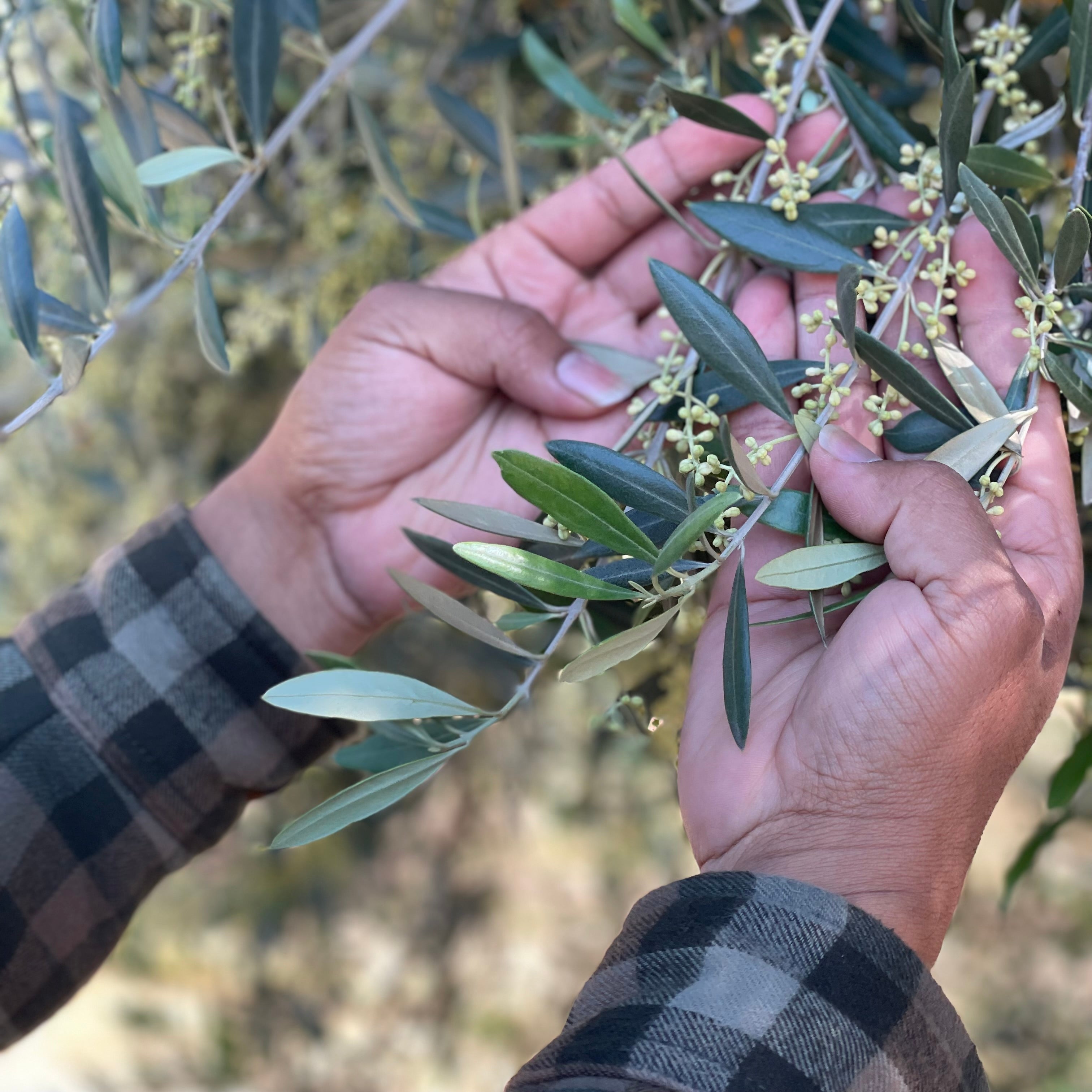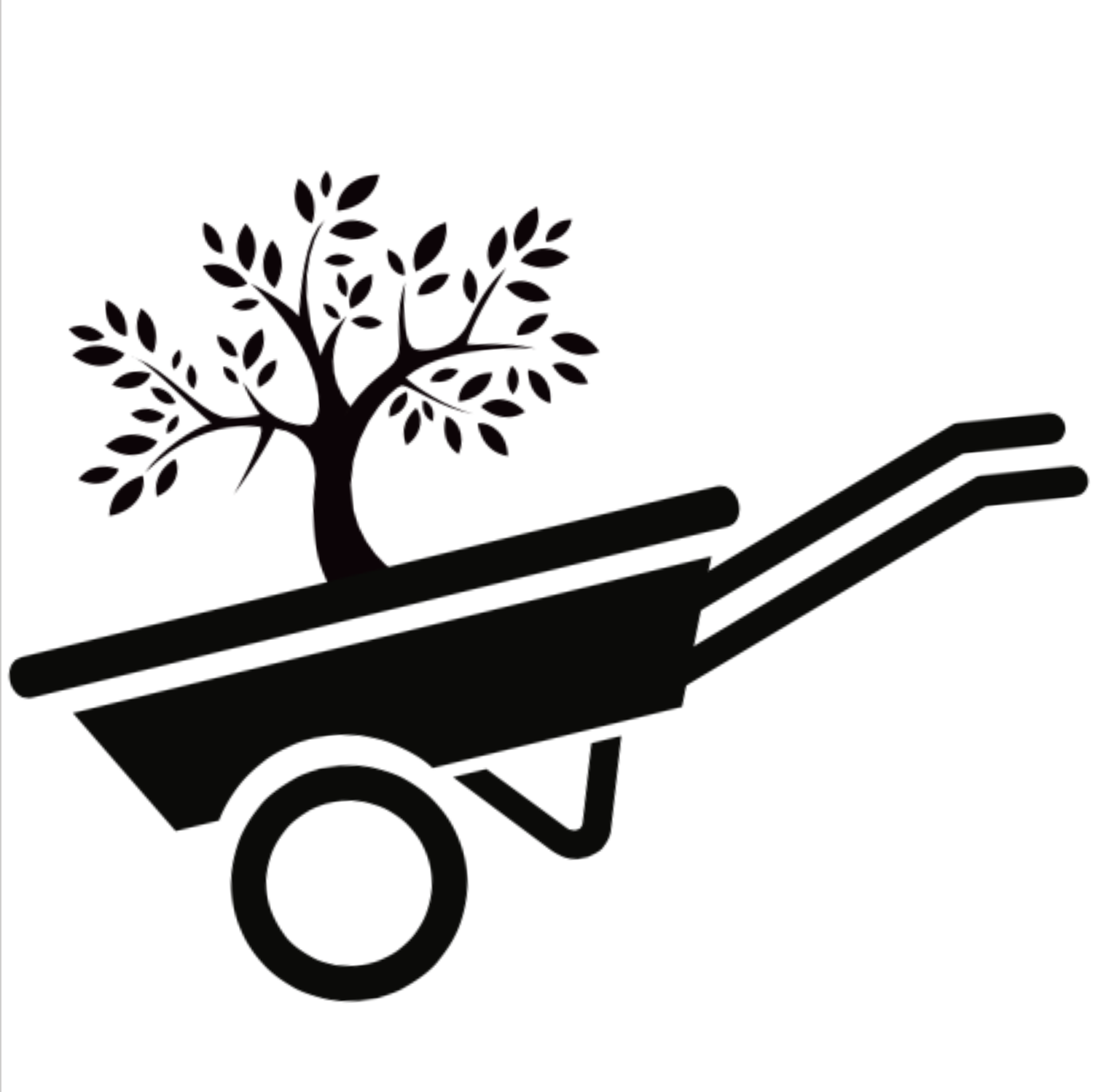
Crop Report, Table Olives May 2024
[Caption: Farmer friend, Artemio, shows Liz the Manzanillo bloom, 8 May 2024]
Table Olives from Corning, California
This article includes the following:
- Early insider look at the start of the 2024 growing season
- A brief accounting of the 2023 season for table olives
- A few words on the reduced availability of table olives in California and why
- A mention about why we're involved
2024 Outlook (too early to tell)
The olive bloom in Corning typically peaks around Mother's Day and, thankfully, this year appears to be close to achieving that norm because we started to see "bud break" in our area the third week of April. I was in two table olive orchards on May 8th, and can report that we're seeing the first flowers open!
Unfortunately, a bountiful bloom does not guarantee an abundant harvest. The table olive trees planted in our area are self fertile varieties that don't rely on bees and insects for pollination, however, even if bees were brought in, not every bloom will bear viable fruit.
I'll share images over the next few months to show the tiny olives that form in May, and talk a bit about "June Drop" when the trees start discarding excess fruit.
Although it is too early to understand how much fruit will be available, we can speculate that olives this year may possibly be harvested 3 to 4 weeks earlier than last year.
2023 Comparison
Last year's disappointing olive crop for both table olives and oil olives affected growers throughout the entire Northern Hemisphere, and early reports indicate similar weak results for our colleagues in the Southern Hemisphere as they harvest this month.
As far as table olives are concerned specifically, the light tonnage impacted Sevillano trees more than Manzanillo. Our county (Tehama) has not yet published the 2023 crop report, however, the USDA "California Table Olive Forecast for 2023" indicates that growers in the state expected 39,000 tons for Manzanillo, but only 1,600 tons for Sevillano. While 40,600 tons is twice the 2022 yield, it is far below the historical averages.
Why is California table olive tonnage declining?
Why is tonnage declining? The facts point to weather, access to labor, increasing costs, and competition from cheap imports. Table Olive tonnage in California is declining in part due to farming challenges that face all of us in a drought-prone state experiencing unusual spring weather patterns. We have also faced ongoing extreme labor shortages for this hand-harvested crop. Immigration policy has put the squeeze on migrant labor, making it difficult to find documented workers to work when the olives are ready.
Beyond challenges with unfavorable weather, inadequate water, and insufficient labor, the costs per acre to farm increase each year -- fuel, olive fly mitigation, permits, taxes. Climate patterns have reduced yields making the income on each ton significantly lower than historic averages, and therefore put tremendous pressure on pricing and/or the decision to continue farming olives at all.
These challenges are made even more acute because imported olives--farmed without California's labor and environmental protections and with the benefit of EU subsidies--can be grown, shipped and sold in the US at lower prices than we can produce here, recent countervailing tariffs for canned ripe olives notwithstanding. This had a particularly dramatic effect for our town in 2019 when the local cannery cancelled grower contracts as relayed by our local newspaper, the Corning Observer.
The factors above have led to a net loss of approximately 20% of our table olive acreage over the past 12 years alone, farmers switching to more profitable crops or selling grand old trees for landscaping a golf course or resort. Some larger growers still have contracts with our local cannery, or with Musco, the other cannery to the south, however, things are forever changed for the small grower.
I should note here that some of these factors impact olives grown for oil, however, because most oil olive orchards have converted to mechanical harvesting (not possible for traditional table olive orchards) and because demand is increasing, oil olive acreage is steady and growing.


Why We Sell Fresh Olives
Although our company was founded as an olive oil company, our town is a table olive town. The smallest family farms, many of them only 10 acres or so, cannot get cannery contracts and cannot afford the high cost of orchard conversion to another crop. This is why we've added fresh table olives to our offering. We hope our modest enterprise will, in a small way, help keep the small, traditional table olive growing culture alive here in Corning by making fresh raw olives available to our patrons across the continental US for home canning.
This year we've contracted both Manzanillo and Sevillano olives through our colleague Artemio Arce, shown above. The two orchards a few miles south of us are side by side with a county road between them for easy access.
See a bit about what we're up to (so far) via our collection "Raw Green Olives", and sign up to be notified when fresh raw green olives are available to ship.
More Table Olive News
We have a few additional table-olive related programs in development which we hope to announce before the end of summer. Stay tuned!

[Caption: Artemio captures a surprise photo of Liz stepping into the Sevillano orchard. The Manzanillo orchard can be seen across the road.]
____________________
Table Olive Orchard Update 13 May 2024
Look how these buds have started to bloom! There are also a few tiny tiny little olives forming.

Table Olive Orchard Update 16 May 2024
In three days, many blossoms have blown their petals and even more little olives are emerging. Not every little olive will stay on this branch. The tree will reject some, which fall to the ground in June.

The image below is a view of the ground directly below the blooming olive tree seen above. The look is a confetti of dry olive leaf litter sprinkled with fresh, yet spent petals from the olive blossoms.






